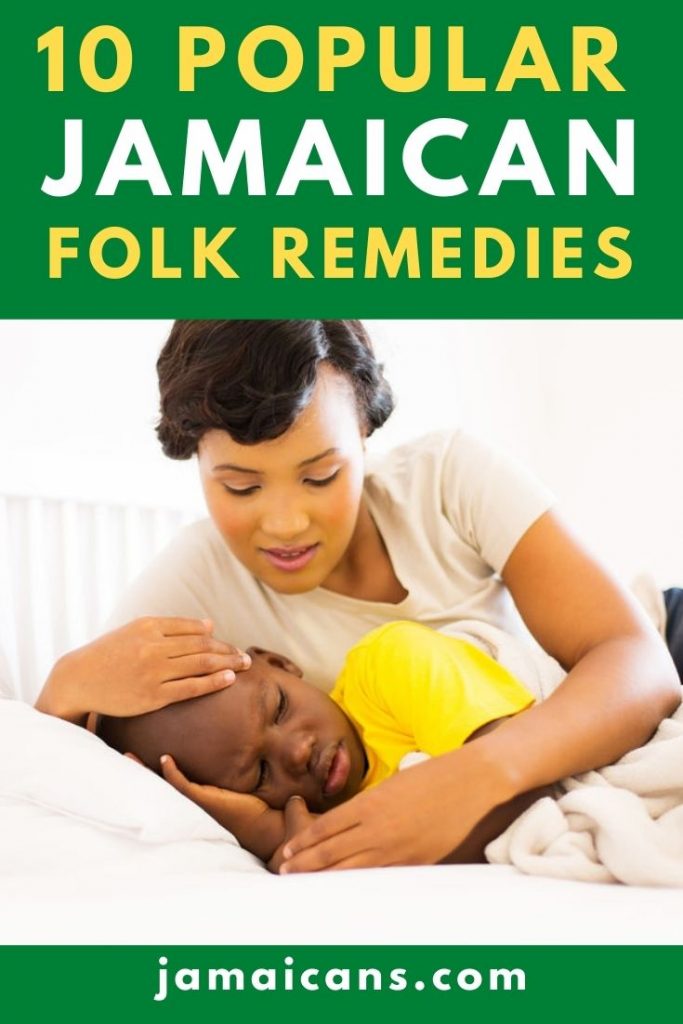
Many Jamaicans believe there’s a natural product to counteract every illness. With this in mind, our ancestors studied the use of herbs and their effects on the body. The result is that there’s a ‘bush’ for every ailment. Some animal products are also used for treating the sick. Be warned, this article is not intended to replace medical advice or recommend any course of treatment! Here are 10 popular Jamaican folk remedies:
- In the olden days, children who suffered with mumps would have their heads ‘gift wrapped’ with cloth that had warm ashes and tobacco leaves inside. This was supposed to reduce the swelling of the glands around the jawline. These days, vaccines take care of the incidence of illnesses such as Mumps, Rubella and Whooping Cough.
- For those who had Chicken Pox, soaking the body in a bath infused with tamarind leaves soothed itching. Containing the itch was necessary to avoid scarring from scratching the skin and breaking open the blisters and pustules.
- A combination of pepper leaves and cake soap was applied to boils. Some people used green pepper leaves soaked in warm castor oil to draw out impurities.
- In the rural areas, those suffering with Measles drank water from corn that had been roasted until burnt and then scraped from the cob.
- For children who continued to wet their beds, parents would give them the ‘heart’ of the soursop to eat. This was supposed to cure that particular weakness. Parched chicken gizzards were also said to cure this affliction.
- When people talk a lot, Jamaican say they’ve eaten too much ‘chicken batty’, which is the oil gland at the top of the tail feathers. Children who refused to talk by the time their parents thought they should, were given fried ‘chicken batty’ to encourage them to talk. This part of the chicken is irreverently known as parson’s nose, or the pope’s nose by protestant Christians, as well as the sultan’s nose by North Africans.
- In the days before doctors were easily accessible, for those with wounds that did not heal easily—especially a ‘sore foot’—a trip to the ‘doctor shop’ or agricultural store was in order. Those is farming communities bought screw worms not only to apply to stubborn cuts, but to heal animals with infected wounds. The worms would devour the rotting flesh, giving the affected area a chance to heal. Screw worm treatment is said to be painful, but modern science is now making the same use of maggots, which gives some legitimacy to what used to be seen as bush medicine.
- The recommended treatment for Whooping Cough was Rat Soup. Household rats were safe from the soup pot. It was the ‘bush rat’ found in cane fields that provided a cure for Whooping Cough. Some believe ‘bush rat soup’ is the stuff of legend, but others swear by the use and curative properties of rat soup.
- Good old Bizzy/Kola nut and Cerassie are used to make tea and are an integral part of Jamaican life. They relieve everything from belly aches and nausea to high cholesterol and the symptoms of gout.
- Many Jamaican children have bad memories of the cleanser known as ‘Mojo herb’, which every child had to drink at the end of summer. This nasty-tasting herbal laxative was given to purge the body of all impurities from the range of foods eaten over the holiday. ‘Mojo herb’ is also known to be helpful to women with painful menstrual cycles.

Photo Source: 123rf
Poll







